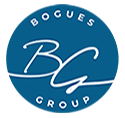Knowing how to get press coverage for your nonprofit can be the key to increasing your visibility, credibility, and impact. Media attention helps you reach donors, volunteers, and stakeholders who can amplify your mission. But securing press coverage requires a strategic approach—one that involves crafting compelling stories, building meaningful relationships with journalists, and effectively leveraging digital tools.
A great example of this is Grace-Mar Services, a nonprofit dedicated to supporting marginalized communities. The organization struggled with brand visibility and fundraising effectiveness due to an outdated brand image, an ineffective website, and limited marketing materials. By implementing a strategic rebrand—updating their messaging, redesigning their website for better engagement, and developing new marketing materials—they were able to increase awareness and drive donor engagement. This transformation not only helped Grace-Mar Services better communicate its mission but also positioned it to secure media coverage, further amplifying its impact.
In this article, we’ll explore why media coverage matters for nonprofits, the essential steps to getting press attention, and common mistakes to avoid.
Why media coverage is essential for nonprofits
Media coverage isn’t just about getting your organization’s name in the news; it’s about building authority, generating awareness, and inspiring action. Here’s why it matters:
- Credibility: News coverage from trusted outlets enhances your nonprofit’s credibility and validates your work. A positive article from a reputable publication can act as third-party validation, making donors and stakeholders more likely to trust your mission.
- Fundraising: Press exposure can significantly boost fundraising efforts by increasing awareness and engagement. Research show organizations that conduct advocacy campaigns experience a 30% increase in donations.
- Volunteer engagement: Media attention can attract volunteers who are passionate about your cause. Personal stories of impact and community success are particularly effective in inspiring new supporters to join your mission.
Key steps to get press coverage for your nonprofit
Journalists are always looking for stories that are relevant, timely, and emotionally engaging. To catch their attention:
- Make it relevant: Tie your story to current events or pressing community issues. For example, if your nonprofit addresses food insecurity, demonstrate how rising grocery prices are impacting the communities you serve.
- Highlight human interest stories: Showcase real people impacted by your work. Share personal stories that put a face to your cause—stories that make readers care.
Target the right journalists and media outlets
The key to successful outreach is targeting journalists and outlets aligned with your mission.
- Choose the right format: Decide the best medium for your message. Print is ideal for in-depth storytelling, broadcast media provides visuals, and podcasts offer conversational, long-form opportunities.
- Research relevant journalists: Identify journalists who cover nonprofit and philanthropy topics. Research recent articles on similar causes and tailor your pitches accordingly.
If you’re looking for expert guidance on navigating your niche and expanding your reach, Bogues Group offers strategic PR solutions designed to elevate your storytelling, branding, and relationship-building efforts.
Choosing the Right Approach: Press Releases or Story Pitches
Understanding when to use a press release versus a story pitch is essential.
- When to issue a release: Use a structured, formal approach when announcing major initiatives, partnerships, or upcoming events. Include a catchy headline, summary, quotes, and clear contact information. To better understand how to write compelling press releases, refer to this comprehensive guide by PRSA.
- When to pitch a story: If you have a unique angle, a compelling personal narrative, or timely trend-related insights, pitch directly to journalists. Personalize your email by explaining why their audience would care about your story. You can follow-up with a press release that includes more information.
- Customize your outreach: Tailor your pitch to each journalist’s interests and audience. A personalized approach is far more effective than generic, mass emails. For instance, if you’re reaching out to a health-focused journalist, emphasize the specific health-related impact of your work
Use social media to your advantage
Your social media presence can be a powerful tool for PR.
- LinkedIn: Establish thought leadership, build credibility, and connect directly with journalists.
- BlueSky: Engage with journalists who are actively testing new social networking tools.
- Twitter/X: Monitor media trends, participate in relevant conversations, and engage with journalists.
Common mistakes to avoid in nonprofit PR
Avoid these to maximize your PR success:
- Sending generic pitches: Journalists can spot a mass email from a mile away. Personalize your outreach to demonstrate genuine interest and knowledge of their work.
- Sending more than one follow-up: One or two follow-ups are enough. Excessive attempts can damage your reputation and strain potential relationships.
- Digitally stalking: Avoid repeatedly tagging journalists on social media or sending persistent messages. Respect their time and boundaries.
- Focus on promotion instead of storytelling: PR is about credibility and storytelling, not promotion. Share genuine stories that demonstrate your impact rather than emphasizing sales or marketing angles.
Putting Your PR Plan into Action
Getting press coverage for your nonprofit isn’t just about reaching out to journalists—it’s about building relationships, presenting compelling stories, and consistently refining your strategy. To recap:
- Be strategic: Plan your media outreach by creating press kits, building media lists, and scheduling outreach efforts.
- Leverage relationships: Build connections with journalists by engaging with their content and providing valuable insights.
- Stay consistent: PR is a long-term effort. Track your results, analyze what works, and refine your approach.
Put these tips into action! Make your outreach more effective and boost your chances of getting press coverage for your nonprofit.
Download our free Nonprofit Story Pitch Template—a fillable, step-by-step guide designed to help you craft personalized, compelling pitches that catch journalists’ attention.

